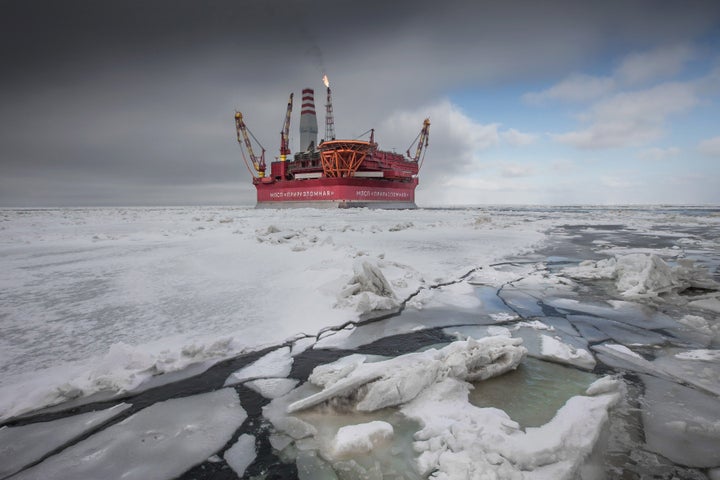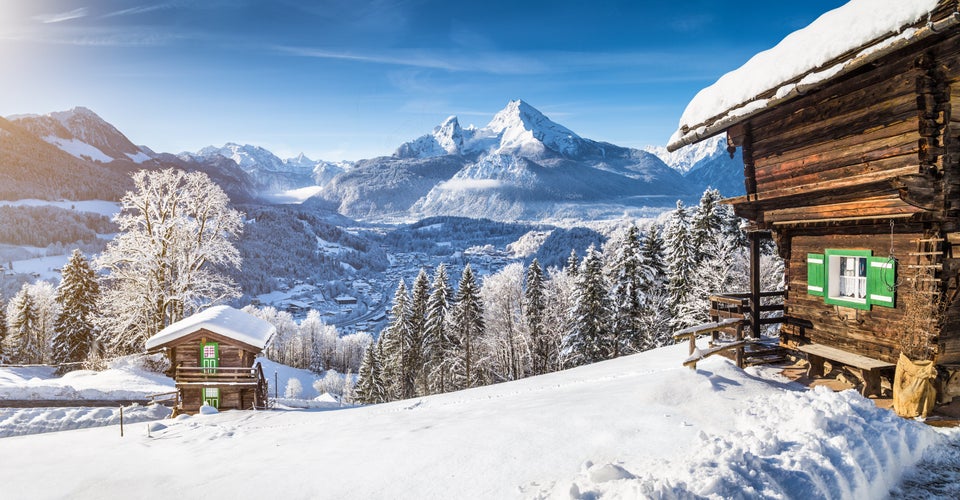With timing too unsubtle for fiction, the oil industry notched two major victories on Thursday as a “bomb cyclone” storm battered the East Coast ― a sign, scientists say, of things to come as the Arctic warms.
On Thursday afternoon, Interior Secretary Ryan Zinke announced plans to open virtually all U.S. waters to drilling, include huge swaths of the Arctic, Atlantic and Pacific oceans.
On the opposite side of the Atlantic, a Norwegian court ruled against environmentalists who sued to block the oil-rich Scandinavian nation from allowing Arctic drilling.
The Trump administration’s decision could have much farther-reaching consequences. The draft plan, released Thursday, makes roughly 90 percent of the U.S. Outer Continental Shelf available for leasing. The Interior Department already identified 47 potential lease sales, including 19 off Alaska’s coast and 12 in the Gulf of Mexico, Zinke said in a call with reporters. The five-year plan opens the Atlantic to drilling for the first time since the 1980s, drawing criticism from even hardline Republicans, including Florida Gov. Rick Scott (R).
Yet the decision marked a clear win for the oil and gas industry, which began pushing its lengthy wishlist to the administration the weeks after Trump won in November 2016. The American Petroleum Institute, the industry’s main lobby, said the announcement put the country “on the right track towards increased energy production, economic growth, and job creation.”

“This new offshore leasing plan is an important step towards harnessing our nation’s energy potential for the benefit of American energy consumers,” Erik Milito, API’s upstream director, said in a statement. “The ability to safely and responsibly access and explore our resources in the Arctic, Atlantic, Pacific and the Eastern Gulf of Mexico is a critical part of advancing the long-term energy security of the U.S.”
The Interior Department did not take questions from HuffPost during the call, and did not respond to an email asking whether its officials had calculated the impact the increased drilling would have on climate change and sea-level rise.
But the announcement, buttressed by the Norwegian ruling, comes as an unusual cold snap culminated with a monster storm blanketing states from Maine to north Florida with snow. The hurricane-like storm, called a “bomb cyclone,” occurs when hot and cold temperatures collide over water and cause pressure to drop rapidly, at a rate of 1 millibar per hour, over a 24-hour period.
It’s difficult to draw a straight line between an individual weather event and the warming climate. But a study released in September found a growing number of extreme cold fronts hitting northern regions as the Arctic heats up at a rate twice as fast as the rest of Earth. That may seem counterintuitive, but the researchers argued that the rising temperatures cause a chain reaction. With less sea ice, the ocean releases more energy. That heat escapes into the atmosphere and weakens the polar vortex winds that swirl over the Arctic and normally keep cold air contained to the region. That weakening allows the frigid air to slip southward more frequently.
“These cold air masses, when they travel over warming waters, the possibility, the probability, of more of these explosively developing cyclones, particularly in populated coastal areas are going to get much more severe,” John Gyakum, the McGill University meteorology professor who helped coin the term “bomb cyclone” in 1980, told HuffPost on Wednesday.

